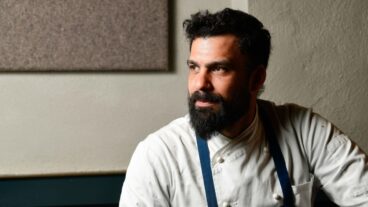‘I’m not only looking at what produces diseases, but at the other side of the equation – what are the social aspects that are a result of the disease.’ – Julie Cwikel.The first time Julie Cwikel heard the term ‘social epidemiology’ was from a former hippie who had traveled with the famous Merry Pranksters psychedelic bus across the US in the 1960s. Little did she know that years later, as a professor of social work at Israel’s Ben Gurion University of the Negev (BGU), she’d end up writing the first comprehensive textbook on the subject.
It is a telling fact that throughout the world, 60% of social workers are engaged in work connected to health problems: aging, psychiatry, children’s developmental problems, rehabilitation, hospitals, etc. The aim of social epidemiology is to promote health at both the individual and population level. The field combines epidemiology (the study of the distribution and determinants of disease and injury in human populations) with the social and behavioral sciences.
According to the thesis, the health of any society or population is intrinsically linked to its social structure and social problems. Public health issues such as infectious diseases, violence, obesity, child abuse and drug use, are related to overall trends in society, as well as to individual behavior. Cwikel’s book Social Epidemiology, Strategies for Public Health Activism teaches how to study the connections between society and health and use that knowledge to promote health.
Cwikel, who had immigrated to Israel from the US in the 1960s, had returned to America to work on her doctoral thesis on how social networks affect health at the University of Michigan, Ann Arbor, where she met the person who uttered the phrase that would guide her work – Prof. Larry Brilliant.
“Brilliant’s guru in India had told him he was meant to solve the world’s public health problems, and to return to medical school,” Cwikel told ISRAEL21c. As a member of the World Health Organization, Brilliant was one of the people tracking down the disappearance of smallpox in the world.
The term ‘social epidemiology’ was also employed by another of Cwikel’s teachers at Ann Arbor, Dr. Jill Josephs, who had published one of the first papers on psycho-social determinants of the AIDS epidemic.
Cwikel found the idea of combining the methodologies of social sciences and public health an exciting concept. Her late father, John Goldsmith, was a world-renowned environmental epidemiologist, and her brother is also an occupational epidemiologist. She had studied biology before earning two degrees in social work. In the early 1980s she decided to do her doctorate in the field of public health.
“I came to epidemiology with two degrees in social work. Since by training I was attuned to social interactions, I thought social epidemiology was a great idea,” she said. “But although everyone seemed to be talking about this approach, there was no textbook.”
When Cwikel returned to Israel she decided to take up the challenge, but work on the first social epidemiology textbook would take 12 years. While edited volumes on selected topics in social epidemiology have been published in the past few years, “what makes this a breakthrough book,” says Cwikel, “is that it combines two sets of knowledge and methodologies: social sciences and public health. This is not that simple; researchers are taught one or the other.”
Aimed at practitioners and researchers from schools of social work, public health and allied health professions such as physiotherapy and nursing around the world, Cwikel’s book is a how-to book, providing a set of tools for practice.
Her approach, explains Cwikel, differs from that of most social epidemiologists, who are mainly interested in statistics about how social determinants, such as poverty, crowding or divorce, affect health. “I’m not only looking at what produces diseases, but at the other side of the equation – what are the social aspects that are a result of the disease.”
As an example, she takes the complicated social phenomenon of homelessness, a huge problem in the United States. “We can look at what predicts it, what things would increase the risk of somebody becoming homeless: having been in a psychiatric hospital, or a victim of violence. Analyzing social factors and their health outcomes is only half of the equation. This can be looked at from the other side – what kind of outcomes does homelessness predict? If you’re homeless, one can predict, for example, that you are much more likely to be infected with AIDS.”
The second half of the book is about applied social epidemiology. Cwikel says the book’s strategy for public health activism comes from her training as a social worker. “That’s from my background in social activism. You not only have to produce knowledge, but also apply it. I wanted not only to look at what causes health problems, but also to look at what you do with that knowledge.”
“A houseful of hormones,” is how Cwikel describes her cozily chaotic house in Omer, near Beersheva. Widowed in 1991 at the age of 37 with three small daughters, Cwikel met organizational psychologist Shmuel Bar-Gil, who himself had been recently widowed with three daughters. They married and started raising their six girls, and had a son together – “the young prince”, now 12 years old.
Cwikel explains that the successful blending of their families took a lot of hard work. “From the beginning we made certain rules. For example, each of us was responsible for putting our own kids in line; we only disciplined our own children. And that worked for us.”
Cwikel, who teaches graduate courses in social work and public health at BGU, is also the founder and director of The BGU Center for Women’s Health Studies and Promotion. Established in 1998, the center deals with social epidemiology in women’s health.
“This is the only such academic center in the world that combines social and medical sciences,” says Cwikel “We work with physicians, combining research methods between the biological sciences and the social sciences.”
A significant section of Cwikel’s book deals with ethical research methods: how to work sensitively with different populations, how to talk to people in a way that they feel comfortable. This includes advice on what not to do.
The techniques were honed during a series of breakthrough studies carried out by the Center for Women’s Health Studies on sex workers in Israel. The researchers interviewed women in brothels in Eilat, Tel Aviv and Beersheva.
The idea behind the studies, explains Cwikel, was to be able to apply the findings “in a way that would be helpful in addressing some of the problems that have come as a result of the huge influx of sex workers to Israel. It was intended to help both the women who are part of the traffic, and the country, which has been supporting this sex industry.
“We may not have turned off the taps of this traffic,” admits Cwikel, “but the work we did was instrumental in getting better treatment, health care and legal advice for the women and persuading the government try to crack down on the influx.” The results of the study form the largest data base in the world of women in sex traffic.
Other recent projects of the BGU Center for Women’s Health Studies and Promotion deal with cancer survivors trying to cope with the effect of chemotherapy on cognitive function, and the ‘Mother to Mother’ project which provides psycho-social help to mothers during the first year of life of their infant.












